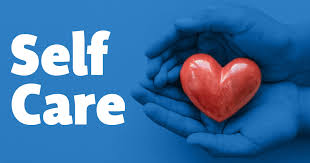Treatment Ideas for COVID-19
Treatment Ideas for COVID-19
 Earlier this month, an elderly client of mine who is in his 80s — I’ll call him John — wasn’t feeling well, so he went to the emergency department of one of the local hospitals. Prior to going to the hospital, John had tested positive for the COVID-19 virus. In addition to the virus, he had other medical issues (comorbidities) that put him in the high-risk category for COVID patients.
Earlier this month, an elderly client of mine who is in his 80s — I’ll call him John — wasn’t feeling well, so he went to the emergency department of one of the local hospitals. Prior to going to the hospital, John had tested positive for the COVID-19 virus. In addition to the virus, he had other medical issues (comorbidities) that put him in the high-risk category for COVID patients.
When John showed up at the hospital, he was experiencing symptoms that included fatigue and a fever. Even though the medical staff at the hospital knew that he was a high-risk patient, because his oxygen level was normal, they sent him home with instructions to return to the hospital if he had shortness of breath or his symptoms got worse.
Before John was released from the hospital, he asked the doctor who was taking care of him if the doctor would give him a prescription for Remdesivir, which is a new drug that was approved by the FDA last month, and is available for use at local hospitals. The doctor wasn’t willing to treat John with Remdesivir because it was only being used for patients who were in severe distress.
Two days after he was sent home, John returned to the hospital. By then, his oxygen level had plummeted and he was dehydrated. He could barely walk on his own. He was admitted to the hospital. Two days later he was transferred to the Intensive Care Unit and was intubated and placed on a ventilator. The last I heard, he was still on the ventilator and his family was asking for prayers.
So how is it that our medical system has gotten to the point where the standard emergency department protocol is to wait until someone is in severe distress before the medical staff is allowed to intervene and do everything possible to get the patient better.
The top two medical conditions that kill the most people in our country are heart attacks and cancer. If an elderly person goes to the hospital with chest pain and numbness in one of his arms, is he sent home and told to come back if his condition gets worse? If a woman goes to the hospital and tells the medical staff that she has a lump on her breast that has gotten larger and is now causing her discomfort, is she sent home with instructions to return if her symptoms get worse?
Why are people who have been diagnosed with a potentially deadly virus and only have mild to moderate symptoms required to wait until their symptoms become more severe before they can obtain expert medical care and treatment?
One reason may be that there is a fear among hospital administrators that their hospitals will be overwhelmed and they will run out of beds if they change their standard of care for COVID-19 patients. Would that same fear justify sending patients with newly discovery heart problems or cancer symptoms home until they get worse?
I’ve written before about how my wife almost died 36 years ago, when a doctor who performed surgery on her made a mistake which resulted in her being hospitalized again a month after she had her surgery. When the doctor said that another surgery might be necessary, I checked her out of the hospital and drove for six and a half hours to the Emergency Department at Saint Mary’s Hospital in Rochester, Minnesota. Why Saint Mary’s? Because I knew the hospital was affiliated with the Mayo Clinic and that once my wife was admitted, Mayo Clinic doctors would be assigned to take care of her. I felt that I had no other choice but to take control of my wife’s care and treatment and do whatever was necessary to ensure that she would be properly taken care of.
Based on my own personal experiences and my representation of hundreds of people who have been injured in accidents, here’s what I tell every one of my injury clients:
In today’s day and age, you have to take control of and manage your own medical care. You can’t rely on anyone else to manage your medical care. You’ve got to educate yourself and manage your own care because our medical system is so overwhelmed and dysfunctional that most medical personnel do not have the time or the permission of their employers to provide the level of medical care and treatment that you need. And if you have children who need medical care, you have to manage their care and treatment. That means doing the research, asking the right questions, and respectfully pushing the doctors and medical staff to provide you with the appropriate level of care and treatment.
In March of this year, after the lockdown of our economy, I set up a file and began saving information that I thought would be beneficial to my family if any of them were to get infected with the COVID-19 virus. I also purchased some medical supplies that could be used in managing the virus. One of the items that I ordered was a finger pulse oximeter, which is a small battery-operated device that can be clipped onto a finger to monitor the oxygen level. I wanted to be able to monitor the oxygen level of anyone in my family who had COVID-19 virus symptoms.
A few months ago, I heard an interview on the internet that I saved and added to my file. The person who was interviewed was Dr. Richard Bartlett, a West Texas emergency department doctor. At one time, after serving on a task force that was established by the governor of Texas, Dr. Bartlett received a meritorious service award from the Texas Department of Health and Human Services. He was also elected and served as a County medical society president for four consecutive terms.
In the interview, Dr. Bartlett said that when he started treating COVID-19 patients in the hospital where he works, he experimented with Budesonide, which is a well-known breathing treatment drug that is ordinarily used to treat asthma patients. Budesonide is a steroid medicine that prevents inflammation and swelling in the lungs. Dr. Bartlett quickly learned that if COVID-19 patients are treated with Budesonide as soon as they begin experiencing symptoms, most of them quickly recover without their symptoms getting worse.
Budesonide only costs about three dollars for each breathing treatment. Dr. Bartlett has posted his protocol for treating COVID-19 patients at https://budesonideworks.com. His protocol includes zinc and clarithromycin, which has been used by various other doctors to treat the virus. The new drug, Remdesivir, is obviously preferable to clarithromycin, but it’s not available for patients who are not experiencing severe symptoms.
So if we were to return to my client who was sent home from the hospital, what do you think would have happened if he had been given prescriptions for Budesonide, clarithromycin, and zinc? Would he have been any worse off if he had taken those medications or would he have been better off? With the knowledge that he’s been on a ventilator for several days without much hope of surviving, it’s easy to answer that question.
If you or one of your family members were to catch the COVID-19 virus and go to the hospital, if your symptoms were not severe, you would be sent home with instructions to return if your symptoms got worse. If you were to ask for a prescription for the medications that Dr. Bartlett recommends for his patients, you would be turned down. Why? Because every hospital has written standards of care and the current standards concerning treatment of the COVID-19 virus do not include those medications. Consequently, the emergency department doctors are not allowed to prescribe those medications.
So here’s what I would do if one of my family members caught the COVID-19 virus and was experiencing symptoms. I would immediately try to get their doctor to prescribe Budesonide. If the doctor said no, I would do my best to find a doctor who would prescribe the medication. I would also ask the doctor to prescribe clarithromycin and zinc, which could be used if it became necessary. If the oxygen level of my family member got too low, I would have to take them to the hospital and hope that my family member would be treated with Remdesivir.
If you’re in the medical field and disagree with what I’ve written, don’t waste your time sending a note to me that chastises me for providing my opinion as to what people should do if they get the COVID-19 virus. There is no bulletproof method for dealing with this virus, but there are some logical steps that can be taken to minimize the risks that come with the virus.





1 Comment
[…] with the COVID-19 virus. The titles of articles were Preparing Your Body for the COVID-19 Virus and Treatment Ideas for COVID-19. After I published the articles, I heard from a man who provided me with a protocol that has been […]